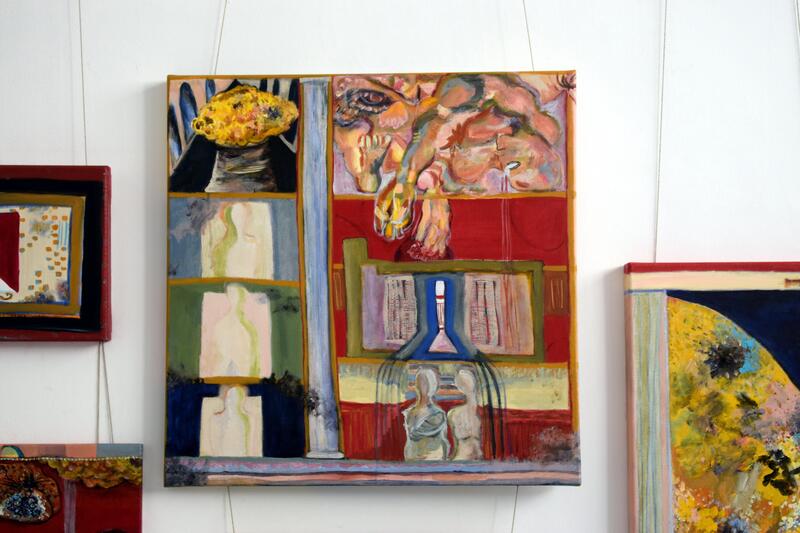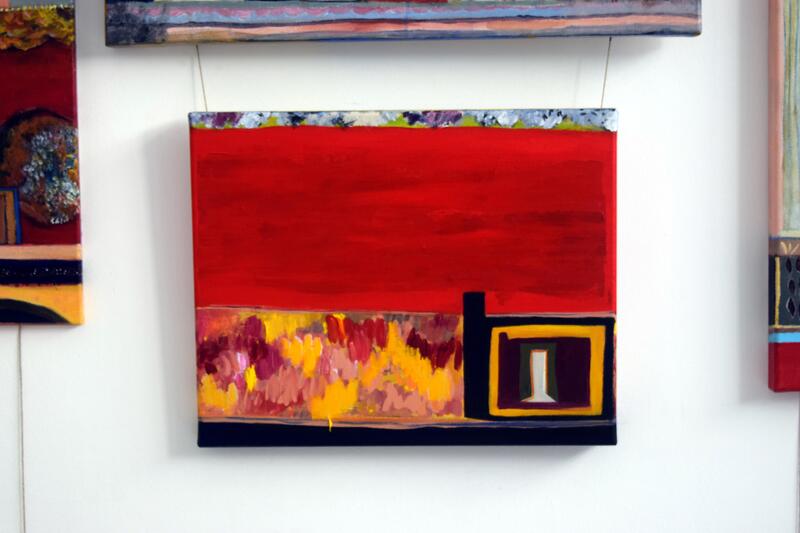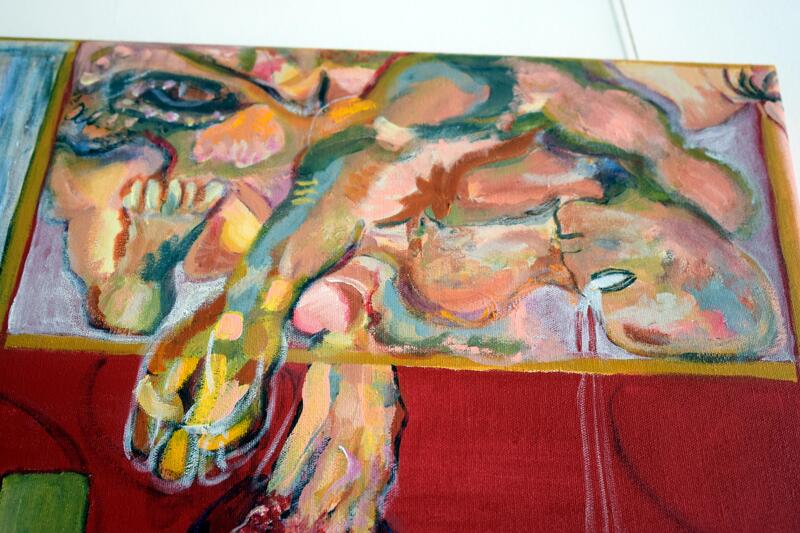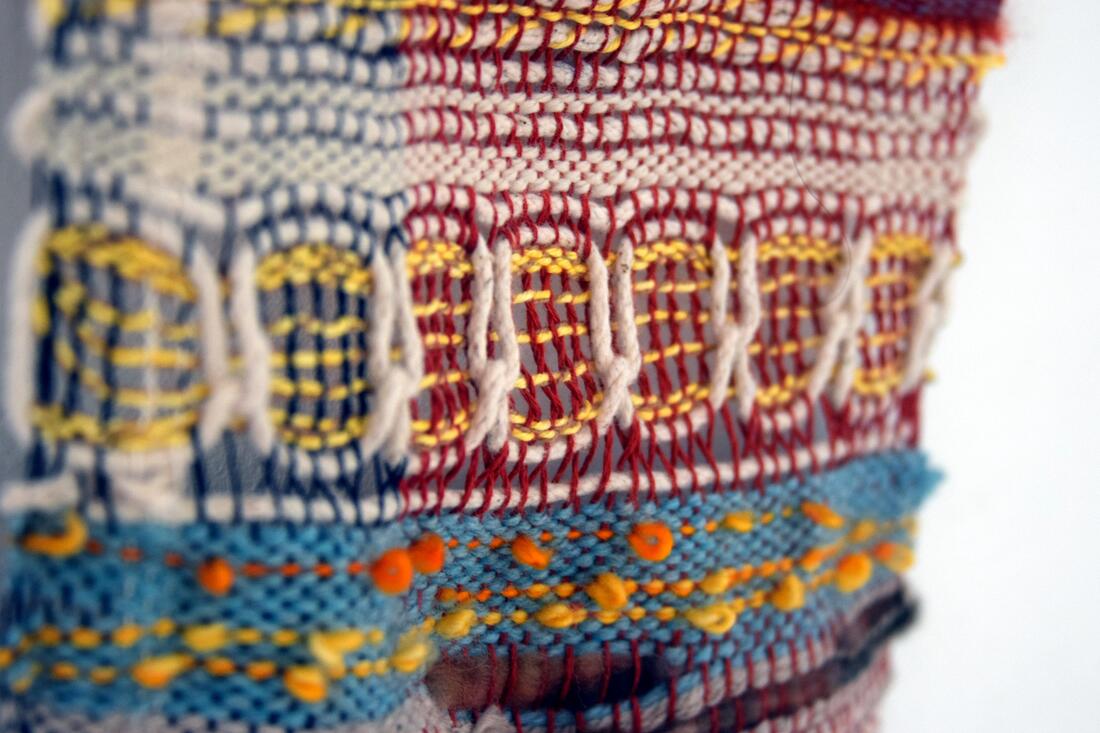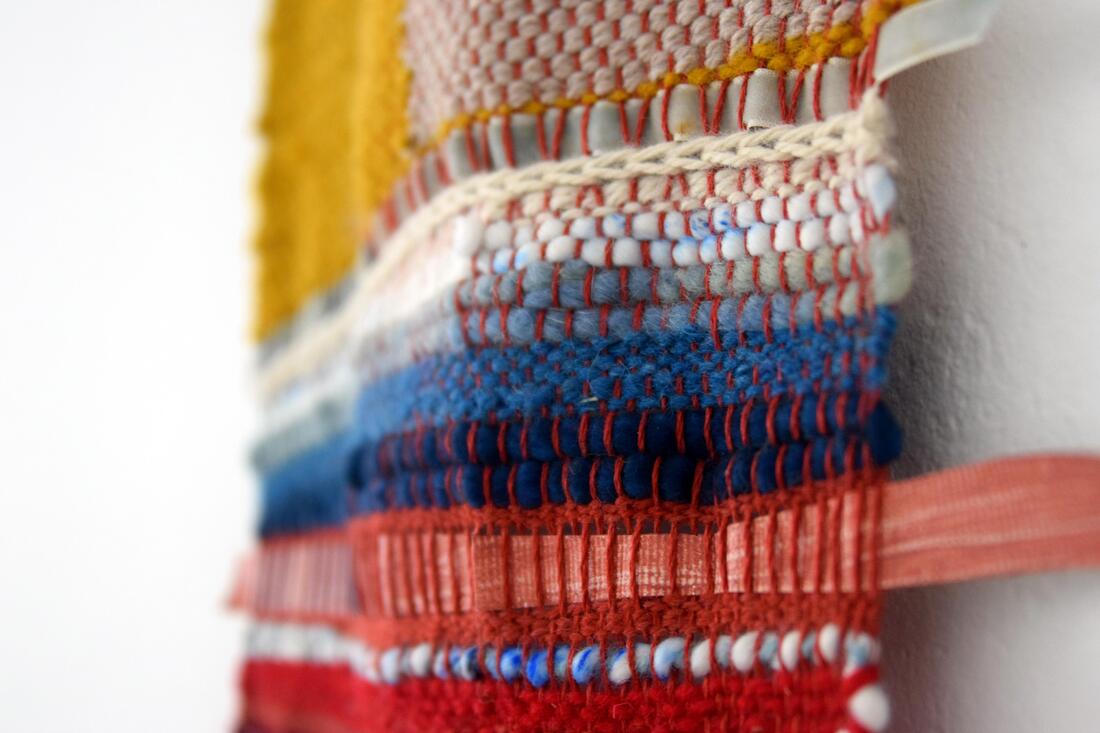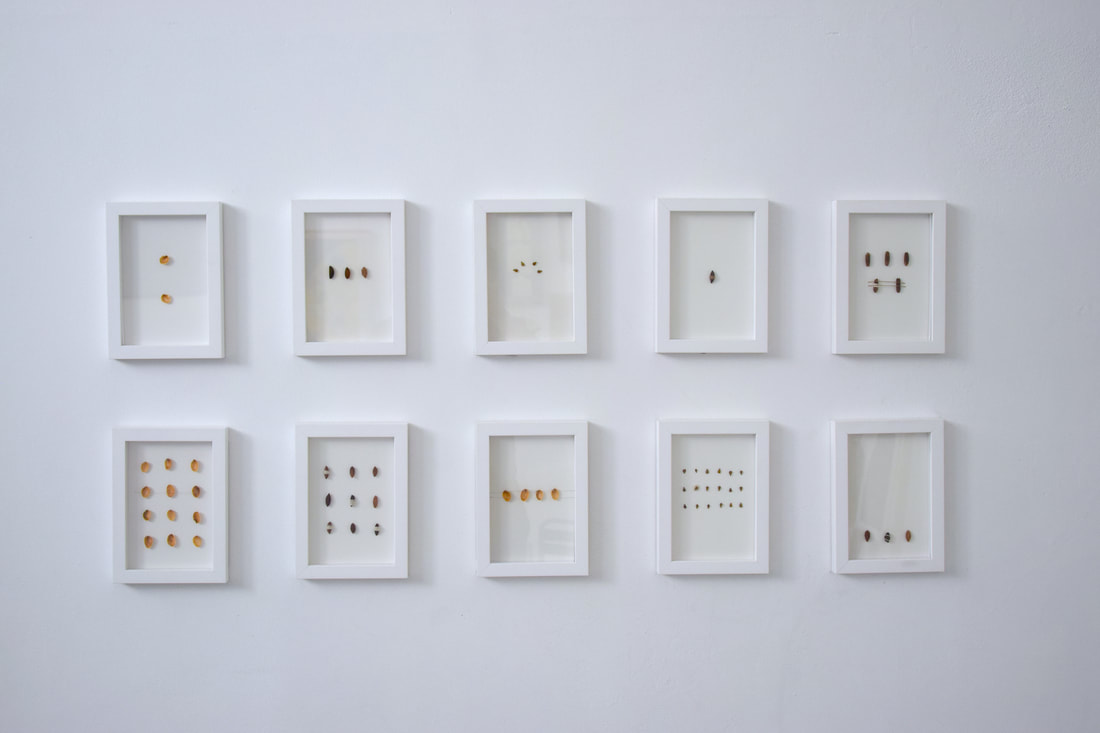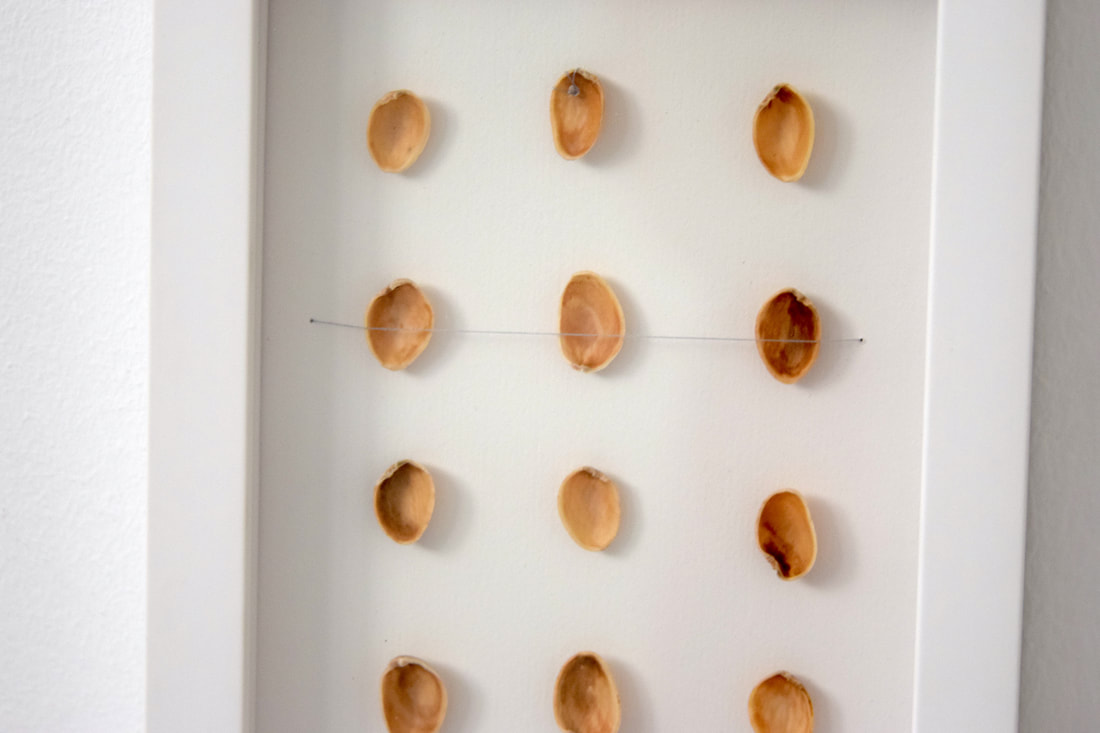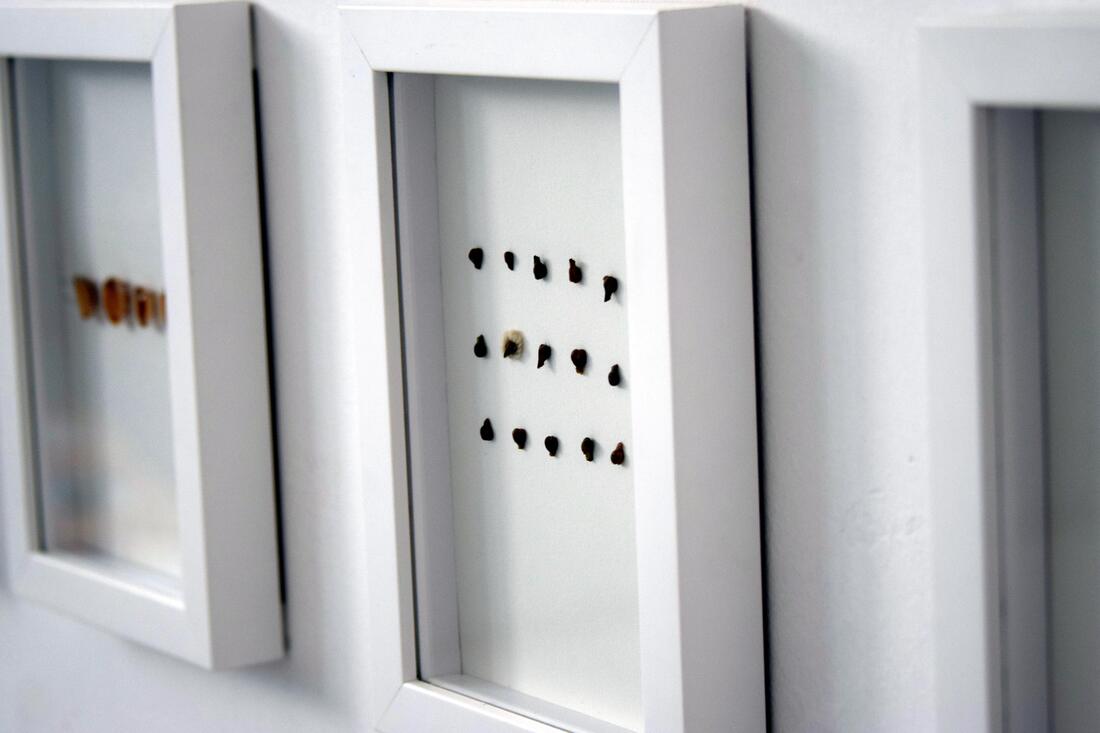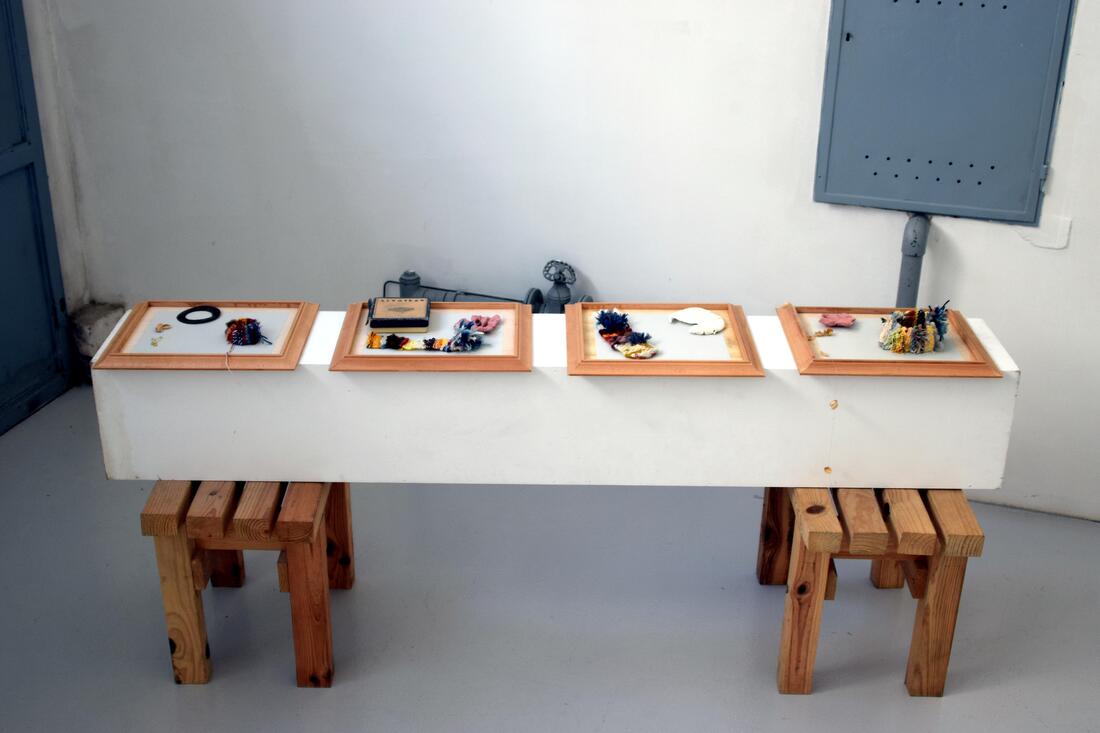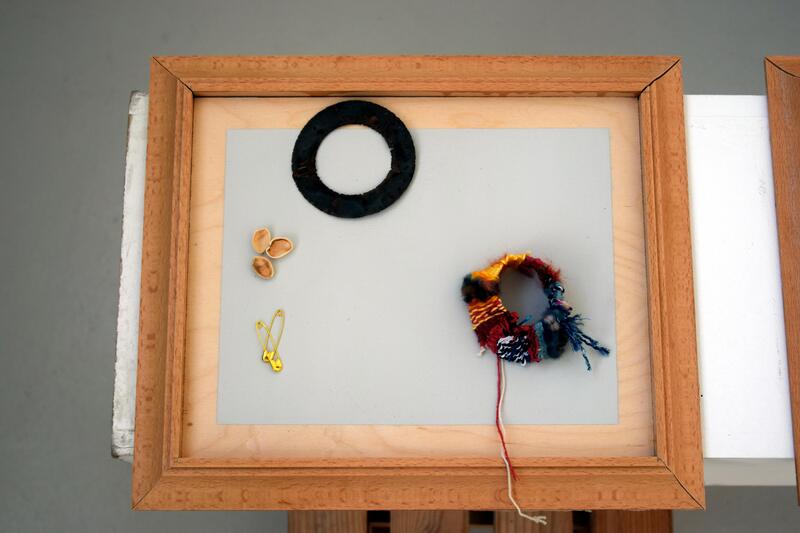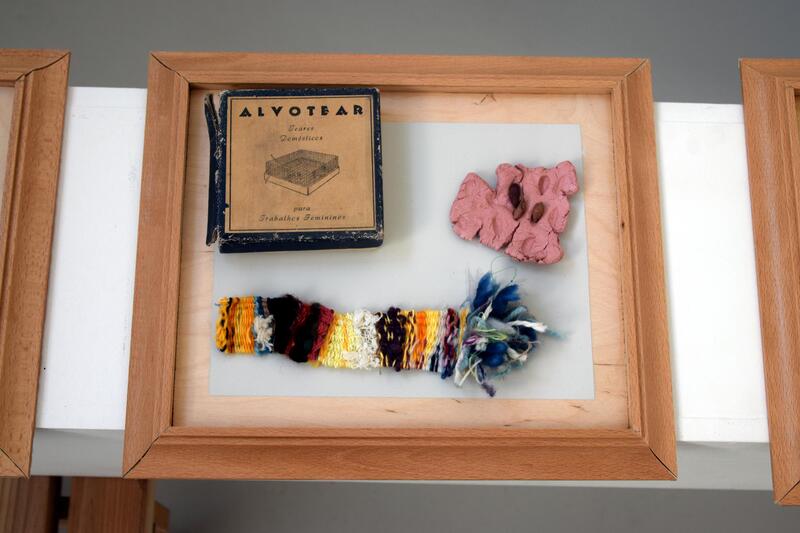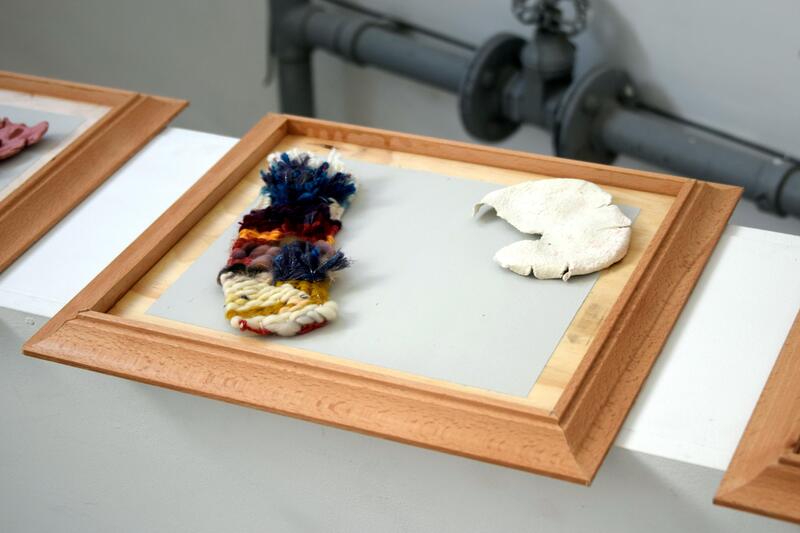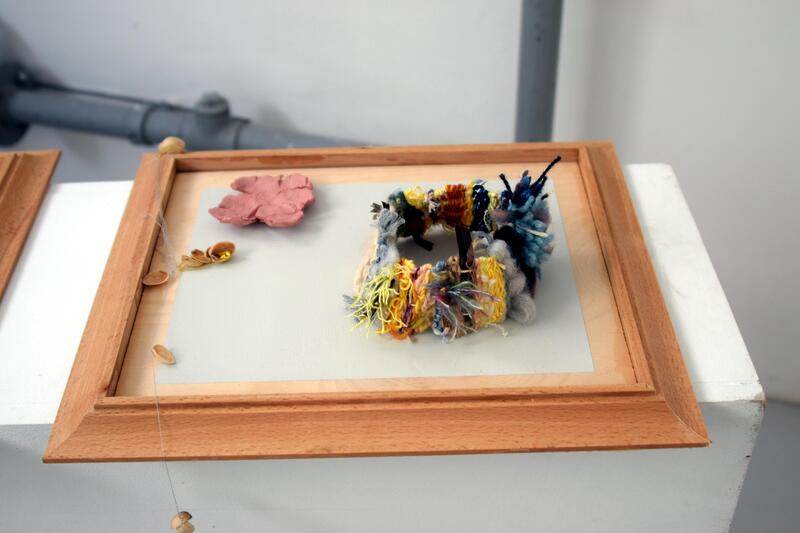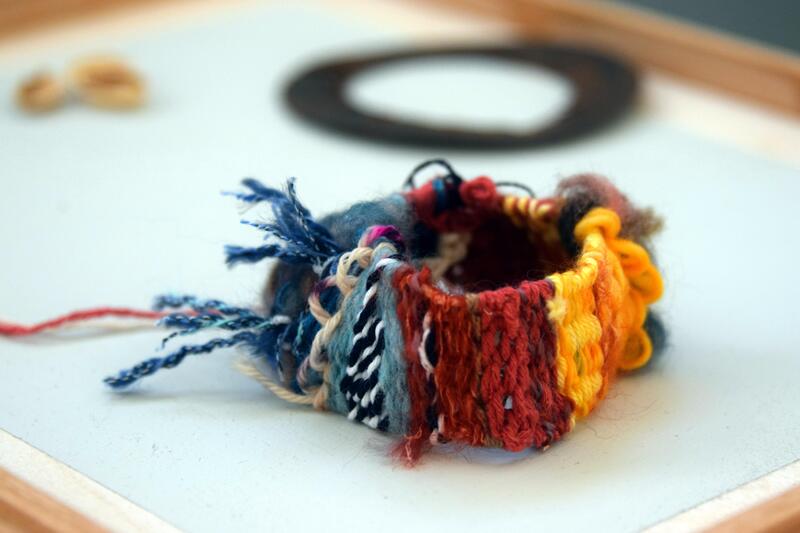if one day these [ ] become ruins...
DESVIO, Lisbon, Portugal
August 2023
(solo exhibition)
Drawing inspiration from the archaeological ruins of Pompeii, the works feature molding citrus fruits, shells and seeds, stone mother statues, and personal symbols expressed through paintings, woven tapestries, and assemblages. The exhibition evokes the specter of climate change from an embodied and historical perspective, and invokes wild transformative forces of nature- time, birth, death, rebirth- that invite viewers to reflect on how bodies age and change, objects crumble, fruits rot, and cities disappear- and how seeds lead to new growth. All works date from 2022-2023.
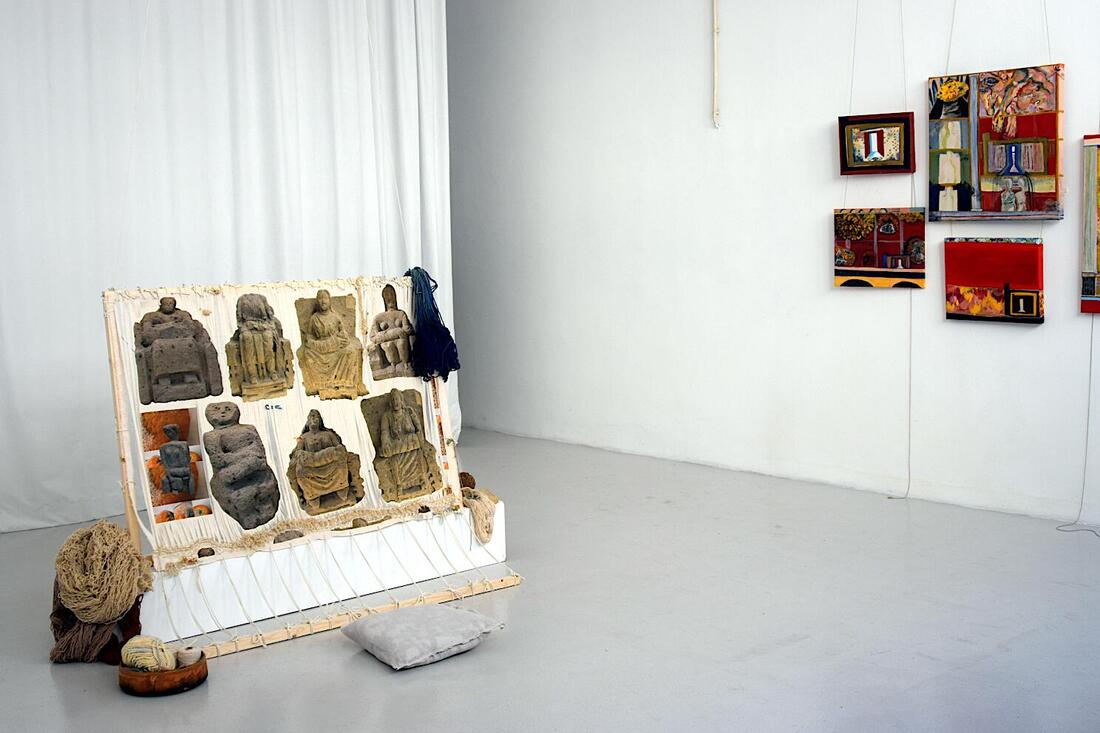
To Liberate a Mother
140 x 100 cm
printed images of “mater matutae” stone ex-voto mother statues from Campania, printed on natural linen, embroidered and handwoven with raw wool roving, cotton, flax, ribbon, and twine
Throughout the exhibition, I ritualistically weave the tapestry, a live performance in honor of the silent mothers.
140 x 100 cm
printed images of “mater matutae” stone ex-voto mother statues from Campania, printed on natural linen, embroidered and handwoven with raw wool roving, cotton, flax, ribbon, and twine
Throughout the exhibition, I ritualistically weave the tapestry, a live performance in honor of the silent mothers.

Clockwise from top center:
the lemon of pink (interior of the exterior) 70 x 70 cm, acrylic on canvas
lunar gestation (exterior of the exterior) 40 x 80 cm, acrylic and aquarelle on canvas
are you home? (exterior of the interior) 50 x 40 cm, acrylic on canvas
cosmic dust (exterior of the exterior) 50 x 40 cm, acrylic on canvas
threshold (interior of the interior) 40 x 30 cm, acrylic on canvas
the lemon of pink (interior of the exterior) 70 x 70 cm, acrylic on canvas
lunar gestation (exterior of the exterior) 40 x 80 cm, acrylic and aquarelle on canvas
are you home? (exterior of the interior) 50 x 40 cm, acrylic on canvas
cosmic dust (exterior of the exterior) 50 x 40 cm, acrylic on canvas
threshold (interior of the interior) 40 x 30 cm, acrylic on canvas
Paintings and handwoven tapestry inspired by frescoes from Pompeii, a society that lived in the shadow of its own destruction (as we do now, in the current human-impacted geologic era called the Anthropocene). Just as life in Pompeii was framed by the shadow of Vesuvius, the paintings shimmer with the impending violence of climate change.
The images display vivid red hues, white columns, textiley borders, and geometrical patterns like Pompeii frescoes, interspersed with moldy fruits that resemble wombs, bellies, moons, or planets. The paintings express a longing for home (with endless corridors, open thresholds, and the repeated geometric symbol of a house), and also consider the archetype of the mother. I painted the largest piece as I waited for my nephew to be born, the first of a new generation for my family. It made me consider the 'birth' aspect of physical/emotional transformations, and how women emotionally give birth to themselves as mothers as they physically give birth to children.
A handwoven tapestry on the opposite wall contains gaps and absences that reference its own materiality - fragile, but strong.
The images display vivid red hues, white columns, textiley borders, and geometrical patterns like Pompeii frescoes, interspersed with moldy fruits that resemble wombs, bellies, moons, or planets. The paintings express a longing for home (with endless corridors, open thresholds, and the repeated geometric symbol of a house), and also consider the archetype of the mother. I painted the largest piece as I waited for my nephew to be born, the first of a new generation for my family. It made me consider the 'birth' aspect of physical/emotional transformations, and how women emotionally give birth to themselves as mothers as they physically give birth to children.
A handwoven tapestry on the opposite wall contains gaps and absences that reference its own materiality - fragile, but strong.

a door without walls
25 x 130 cm
handwoven tapestry
cotton, wool, linen, silk, thread, ribbon, canvas, nylon, raw wool roving, velvet
25 x 130 cm
handwoven tapestry
cotton, wool, linen, silk, thread, ribbon, canvas, nylon, raw wool roving, velvet

seed assemblages
10 in x 7 in each
olive stones, date pits, pistachio shells, grape seeds, thread, paper, wool roving, glass frames
Delicate assemblages present a quiet meditation on embodied experience, domesticity, and waiting. These remnants- pistachio shells, date pits, olive stones- have touched the mouth, have been washed and tended to, have been selected and preserved. There is an intimate care to these moments, which are now commemorated with thread, fine paper, and frames.
Intimate sites of physical encounter, these seed and stone remnants create an archive of moments, redefining what we consider to be 'monumental'.
There is also a play on words here- olive 'stones' hearken back to the crumbling stone mothers on the central tapestry, and subtly reference the most prevalent material found in sites of archaeological ruins.
10 in x 7 in each
olive stones, date pits, pistachio shells, grape seeds, thread, paper, wool roving, glass frames
Delicate assemblages present a quiet meditation on embodied experience, domesticity, and waiting. These remnants- pistachio shells, date pits, olive stones- have touched the mouth, have been washed and tended to, have been selected and preserved. There is an intimate care to these moments, which are now commemorated with thread, fine paper, and frames.
Intimate sites of physical encounter, these seed and stone remnants create an archive of moments, redefining what we consider to be 'monumental'.
There is also a play on words here- olive 'stones' hearken back to the crumbling stone mothers on the central tapestry, and subtly reference the most prevalent material found in sites of archaeological ruins.
moldy fruit assemblages
(below, left to right)
orange ruins i mixed fibers, iron ring, rust, pistachio shells, safety pins
orange ruins ii mixed fibers, clay, olive stones, vintage loom box
orange ruins iii mixed fibers, clay
lemon ruins i mixed fibers, thread, pistachio shells, clay
(below, left to right)
orange ruins i mixed fibers, iron ring, rust, pistachio shells, safety pins
orange ruins ii mixed fibers, clay, olive stones, vintage loom box
orange ruins iii mixed fibers, clay
lemon ruins i mixed fibers, thread, pistachio shells, clay
Bodies change, die, and disappear, leaving echoes, traces, and fertile ground for new bodies to emerge. The sensuousness of fruits and their soft growths of mold mirror this process. Inspired by Natural History Museum displays, the four assemblages laid atop the plinth present textured handwoven sculptures that emulate molding oranges and lemons. These sculptures are paired with clay imprints of citrus skin and olive stones- remnants that could be found at an archaeological site.



